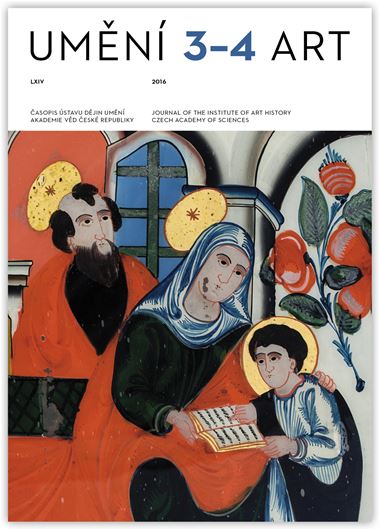Jindřich Kolda
Umělec versus objednavatel. Polská aféra barokního rytce Michaela Heinricha Rentze (1746–1747)
Michael Heinrich Rentz (1698–1758), one of the most eminent Czech engravers of the baroque era, worked briefly in Poland, but no attention has yet been given to this period in the artist’s life owing to a lack of sources and the fact that the year he spent at the estate of Jan Klemens Branicki (1689–1771), a high-ranking member of the Polish army and a politician, produced only five small engravings. Three letters, discovered by chance, that were exchanged between Marshal Branicki, Franz Kinner von Scharffenstein, Imperial Resident in Warsaw, Franz Karl Rudolf von Swéerts-Sporck, and Rentz himself, reveal that an ostensibly minor commission to create several woodcuts of gardens and of the palace in Białystok unexpectedly evolved into a dispute of almost political proportions. A diplomatic scandal was only avoided by the intercession of a Habsburg diplomat and his well-considered references to potential powerful interlocutors, and he managed to persuade the well-born participants to back down from using force to resolve the conflict. The letters also provide evidence of the twists and turns that marked the journeys that central European artists took abroad to earn a living, and, no less importantly, of the wretched end of the life of this highly creative late-baroque Czech artist. Rentz’s approach to the commission was affected by the despotic attitude of Branicki, who rejected any attempt by the artist to apply an imaginative hand to the work, even when within the scope of what he had been used to with his former ‘employer’ Count Franz Anton von Sporck. What is surprising in the letters is the assertiveness with which Rentz insists that Marshall Branickihave the quality over all his unquestioned criticisms, to have the quality of his work assessed by an expert with at very least the same understanding of geometry and perspective as Rentz himself. This article is accompanied by examples of Rentz’s Polish work, the first time they have ever been published in the Czech Republic.
Full-text in the Digital Library of the Czech Academy of Sciences:
https://kramerius.lib.cas.cz/uuid/uuid:fc32e952-771e-426f-b4c4-f95d9c5515f7
< back

